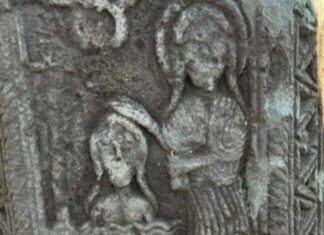NEW YORK — Two Diasporan Armenian powerhouses came together on Monday, August 28, at the headquarters of the Carnegie Corporation of New York, to announce the creation of a new and unique museum halfway around the world.
Legendary singer Charles Aznavour announced the creation of his eponymous Interactive Museum and Cultural Center in Yerevan, with the help of Vartan Gregorian, the indefatigable president of the Carnegie Corporation.
Gregorian joked that “Charles Aznavour is 73, but he claims to be 93” so that people would treat him better. He also thanked the 60 or so guests assembled, “who have defied every rule of New York” by being present in the city in late August as well as “every Armenian rule” by arriving even before the noon start time of the luncheon, contrary to a reputed predilection for lateness.
The museum will be a center for all things Aznavour — his music, life and ambitions, loves and family. He has recorded his life story so that those going through the exhibits can hear him tell his story.
But it is not only that.

According to the brochure, the Charles Aznavour Interactive Museum “will use multi-media technologies such as computer animation and augmented reality to walk you through the realization of a dream and inspire you to be more than you thought you could be. By taking you through the experience of one man and his music, the museum will show you what is possible if you allow love and your dreams to guide you.”








